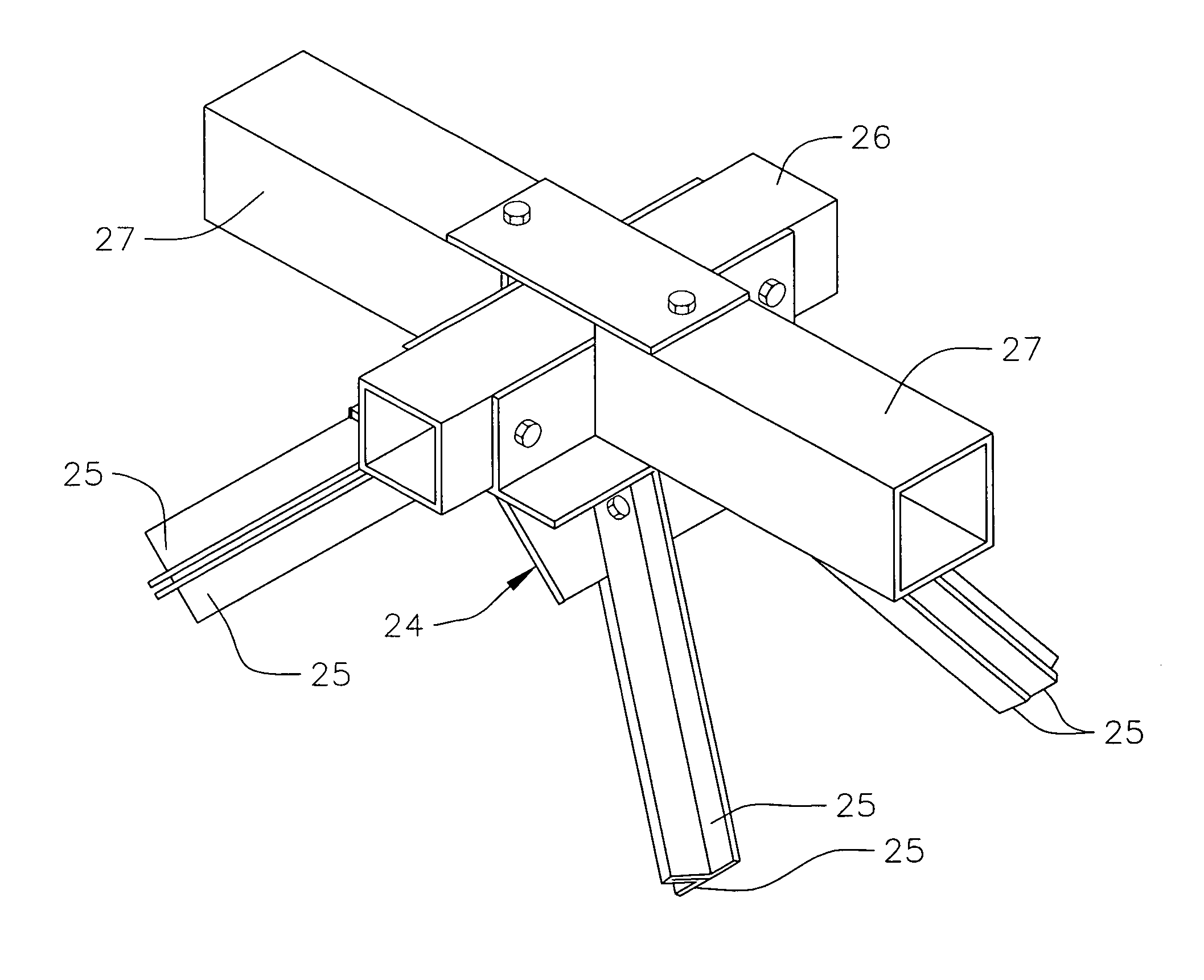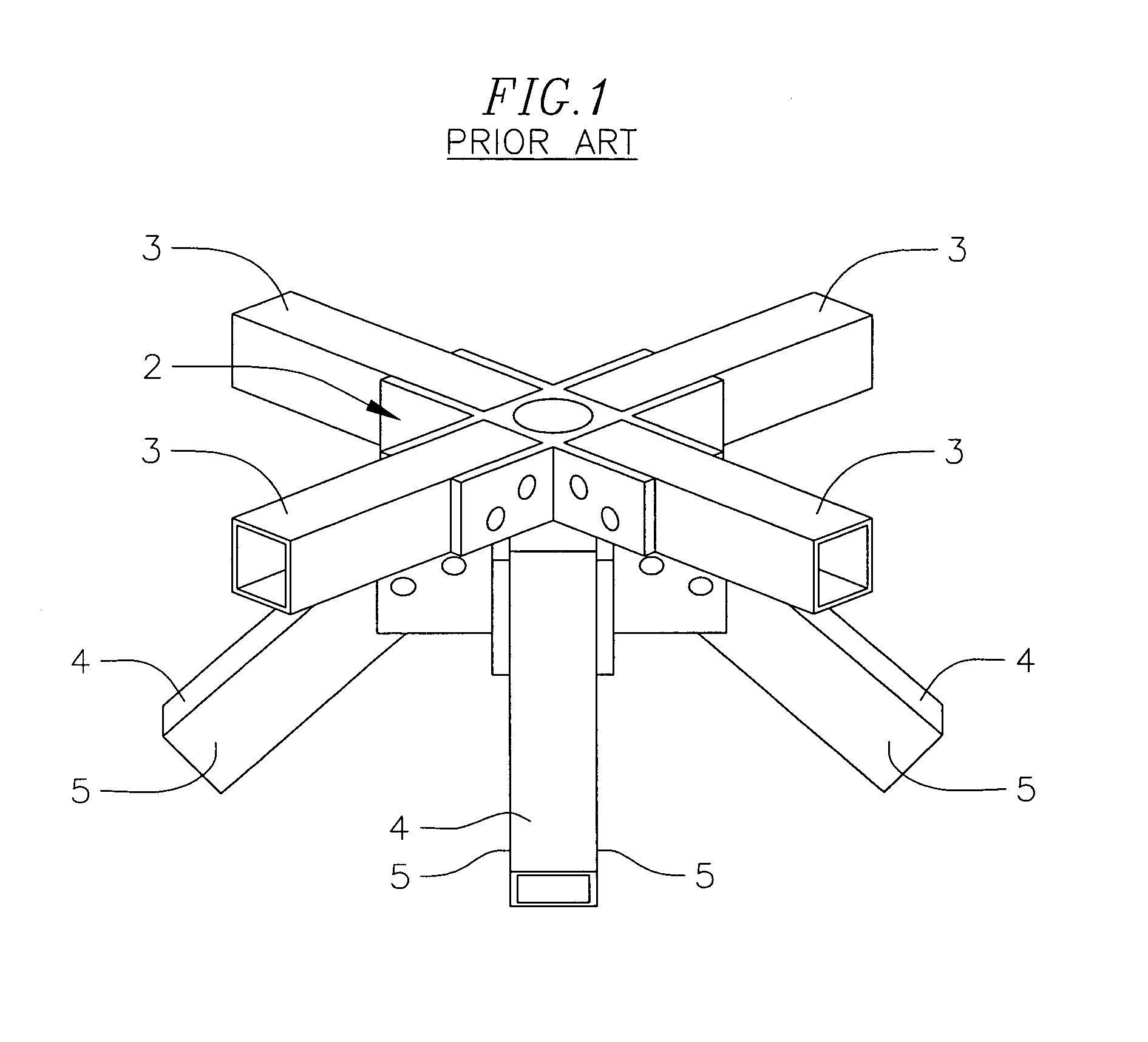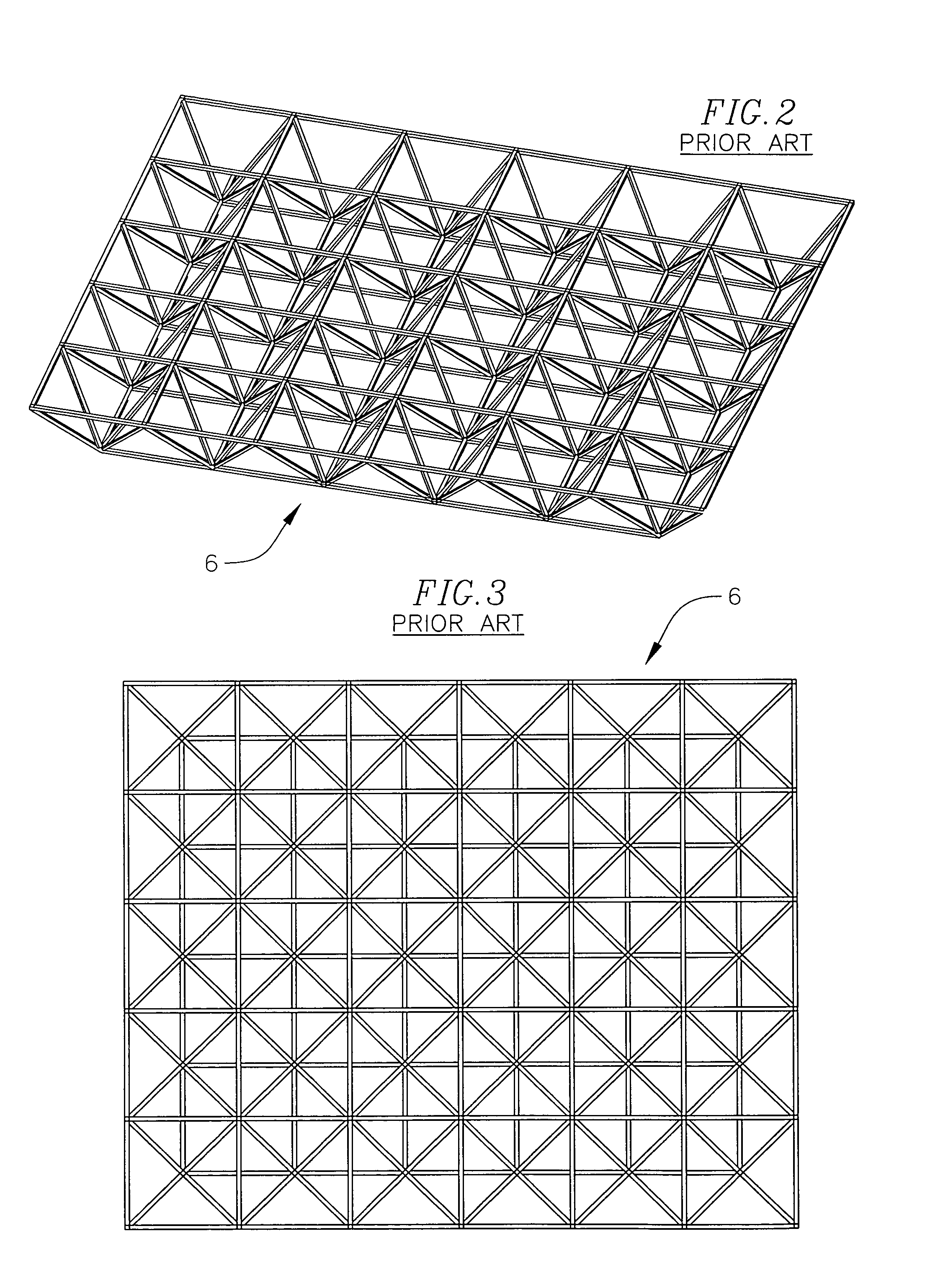Connection node for a universal truss joint and double layer grid
a technology of connecting nodes and trusses, applied in the direction of joists, girders, buildings, etc., can solve the problems of difficult design and construction of contoured (free-form) footprints, more expensive design and fabrication processes, and difficult to produce flat double-layer grids. , to achieve the effect of simplifying the problem of attachment and simplifying the connection
- Summary
- Abstract
- Description
- Claims
- Application Information
AI Technical Summary
Benefits of technology
Problems solved by technology
Method used
Image
Examples
Embodiment Construction
[0022]FIGS. 5 through 7 depict a simplified representation of prior art node connector joint 2 (see FIG. 1) and illustrate the existing convention for member orientation in conventional double-layer-grids. Wide-flanged (WF) members are shown for grid framing members 3, 4 in FIGS. 5-7 to help visualize strut member orientation. As seen in FIG. 5, the diagonal member in the foreground has the web oriented vertically as do the other diagonal members connected to that node connection joint. FIG. 6 shows the same joint 2 in a bottom view in which the intersections of the diagonal struts 4 trace a cruciform which indicates that the flat flange surfaces of the WF diagonals are in separate planes. FIG. 7 is a close-up of a joint from space frame 6 (see FIG. 4) which illustrates that the flanges of the strut 4 members are not parallel to the plane defined by the row of diagonals in each half-bay.
[0023]A simplified depiction of a DLGC joint 8 according to the present invention is shown in FIG...
PUM
 Login to View More
Login to View More Abstract
Description
Claims
Application Information
 Login to View More
Login to View More - R&D
- Intellectual Property
- Life Sciences
- Materials
- Tech Scout
- Unparalleled Data Quality
- Higher Quality Content
- 60% Fewer Hallucinations
Browse by: Latest US Patents, China's latest patents, Technical Efficacy Thesaurus, Application Domain, Technology Topic, Popular Technical Reports.
© 2025 PatSnap. All rights reserved.Legal|Privacy policy|Modern Slavery Act Transparency Statement|Sitemap|About US| Contact US: help@patsnap.com



